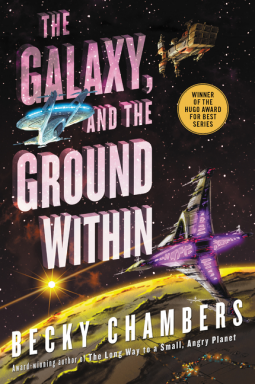 |
| Finches Consider Their Options |
It’s okay to change your mind about something you’re writing. That’s what I’ve recently done with a plotline of a novel I started late last summer, and recently returned to working on.
My life has changed a lot in many ways over the last six months. In large part due to these changes, a major plotline that seemed very compelling back when I started the piece in August of 2021 not only no longer held my attention, I was actively opposed to working on it. Since this did not apply to other plotlines in the same piece, which were developing easily and held my interest, I gave myself permission to let this plotline go.
Does this mean that prior effort was “wasted”? Not at all. The plotline may still come into the book at a later point. Or it may be the heart of a later book. Or it may simply have been a wrong turn.
I’ll know when I finish writing what I’m now happily working on.
One of the great freedoms to writing something on spec is that you don’t need to answer to anyone except your Muse when creating a story.
Sure, you can still change your mind, but there’s an extra step if you have sold or placed the piece based upon a proposal. It’s not right to drop, say, a twisted romance on an anthology to which you’ve promised a dark fantasy sword and sorcery adventure. Not only would the editor have every right to reject the new take, you’ll probably have seriously damaged any reputation you had for reliability or professionalism.
Nor, of course, if you’re writing in a series can you suddenly change established elements from prior published works. Firekeeper will never have been raised by giraffes, for example.
In fact, the longer the series, the more restrictions develop. Finding good stories that fit into the established material is simply one of the challenges of writing a series. If you can’t find a good story, take a breather from that series.
I’ve watched so many writers push and push to keep working on a story that has lost its “zing.” They seem to have forgotten that part of writing well is writing about something that has your full enthusiasm.
Or so I feel, at least. As always, I’m happy to hear arguments to the contrary or examples of where an author managed the reverse.
Meanwhile, I’ll go wander off and get back to writing. I can’t wait to find out what’s next.
Jane Lindskold is the award-winning, New York Times best-selling author of more than twenty-five novels, including Library of the Sapphire Wind and Aurora Borealis Bridge, the six-volume Firekeeper Saga (aka “The Wolf Books”), the two athanor novels (Changer and Changer’s Daughter), the three volumes of the Breaking the Wall series, the Artemis Awakening series, and many more. Lindskold has also written in collaboration with David Weber (Fire Season and Treecat Wars) and Roger Zelazny (Donnerjack and Lord Demon). When she’s not writing or reading, she’s likely being ordered around by a variety of small animals. Lindskold lives in New Mexico.
I've been enoying Library of the Sapphire Wind -- women of "a certain age" (meaning gray-haired and juicy with wisdom) get to have adventures in a world of anthropomorphic races. Plus I love it when a librarian, an archaeologist, and an unrepentant hippy grandmother team up.
Here's the skinny: Instead of mentors, they got monsters . . . That’s what Xerak, Vereez, and Grunwold think when three strange creatures shimmer into being within the circle of Hettua Shrine. Their conclusion is reasonable enough. After all, they’ve never seen humans before.
As for Margaret Blake, Peg Gallegos, and Tessa Brown—more usually known as Meg, Peg, and Teg—they’re equally astonished but, oddly enough, better prepared. Age and experience have accustomed them to surprises. A widely varied course of reading material has intellectually prepared them for the idea that other worlds, even worlds where people with traits more commonly ascribed to “animals” may exist.Then there is the mysterious verse that Teg speaks as they arrive, words that seem to indicate that the Shrine must have been at least partially responding to the request made of it.Despite doubts on all sides, the three unlikely mentors join forces with the three young “inquisitors” and venture out into the world Peg dubs “Over Where.” First they must find the Library of the Sapphire Wind, destroyed years before.Will they find answers there, or is this only the first stage in their search?







